Test Drive Report: New Mercedes-AMG SL43|Why Name It “SL”?
公開日:2023.01.22
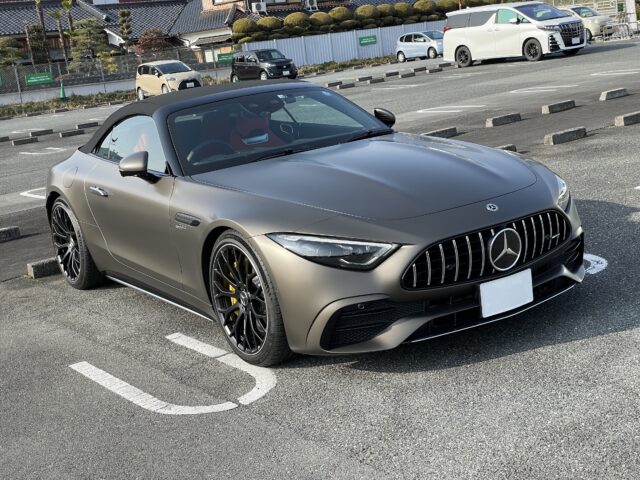
The other day, my younger brother bought the new Mercedes-AMG SL43 (R232 model).
When it comes to the SL, it’s a model I personally love as well—one of the three cars (911, SL, M3) I dreamed of owning when I was younger. In fact, I used to drive an R129 SL500, and I also once owned the R171 SLK350, which is like the little brother of the SL.
I truly love the SL among all Mercedes models, and it holds a special place in my heart.
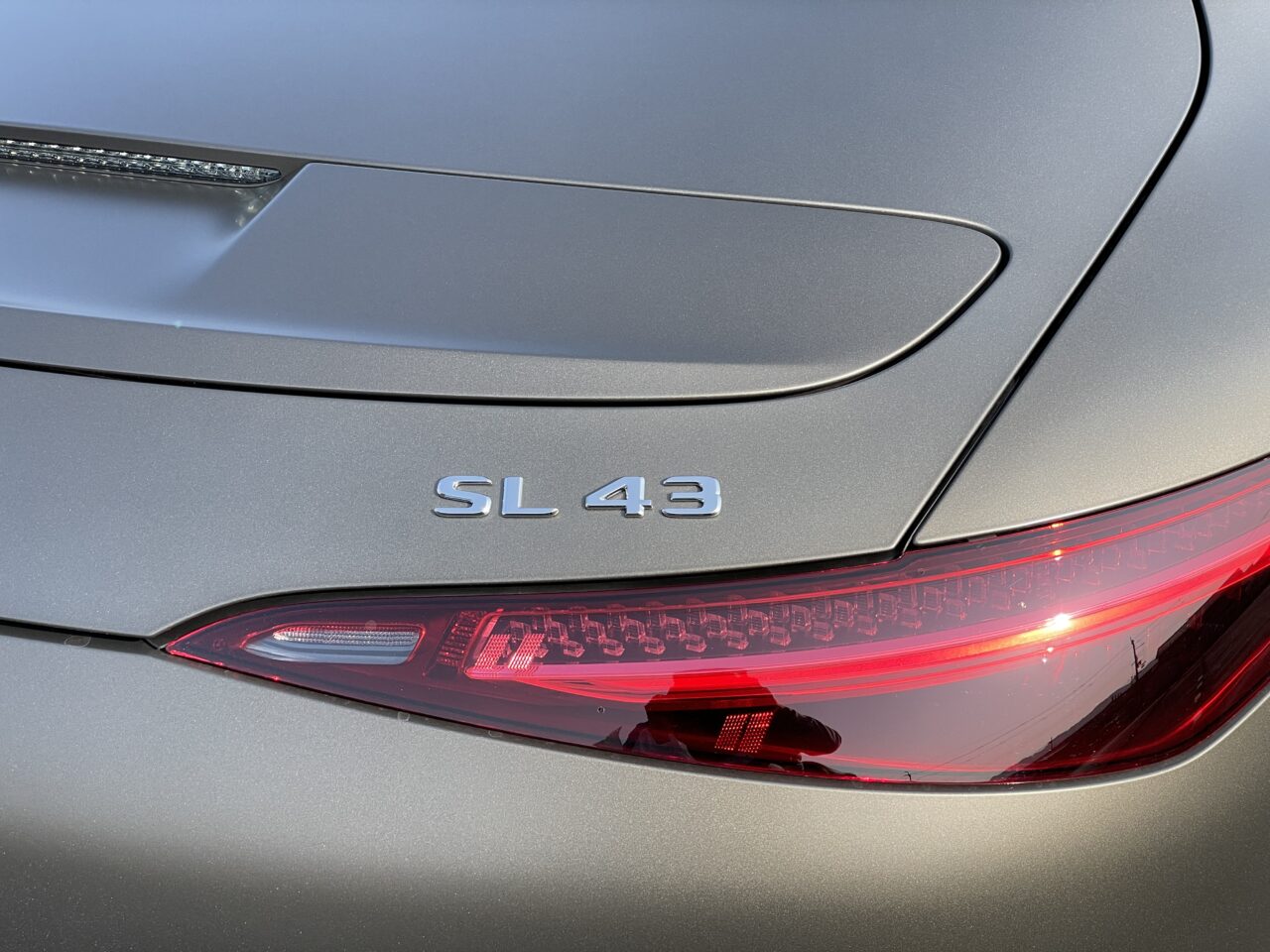
That said, when I saw the announcement of this new SL, I felt very conflicted. The design is a clear departure from previous SLs, it’s only available as an AMG model, and the SL43 comes with a 4-cylinder turbo engine.
Hearing this honestly made me feel uneasy.
Before the test drive, as a former SL owner, I wondered if my concerns would prove true or if they would turn out to be unfounded. To find out, I sat in the driver’s seat.
コンテンツ
Mercedes-AMG SL43
Exterior & Interior
It looks much cooler in person than in photos. The matte AMG Monza Grey Magno paint is stunning and suits the new body perfectly. However, if you ask me whether this design really feels like an SL, I’d say no. At first glance, it could easily be mistaken for an AMG GT Roadster. The design seems to emphasize the aggressive, bold presence that previous SLs had even more.
The roof is no longer a vario-roof but a soft top, and the seating is now 4-seater.
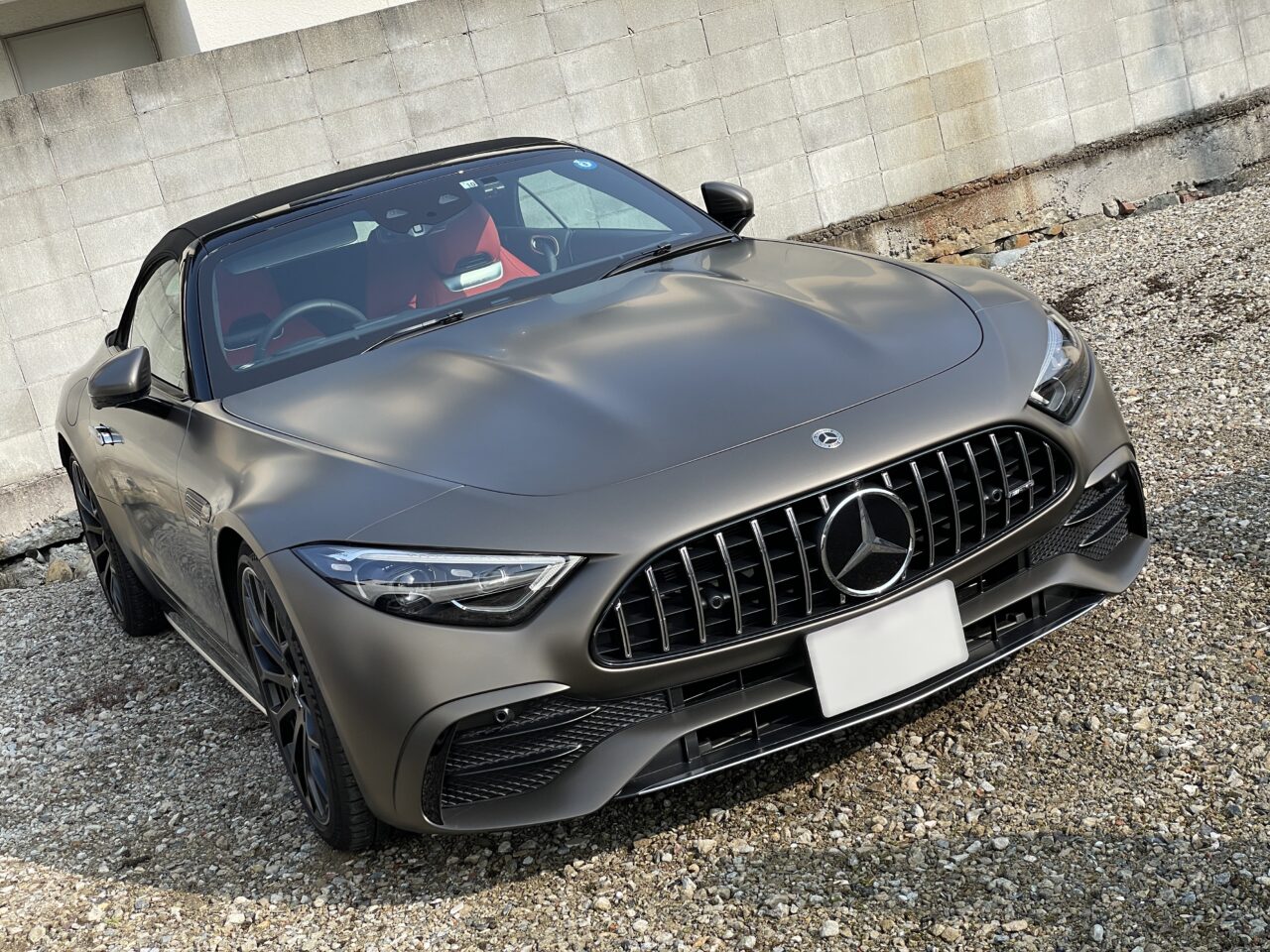
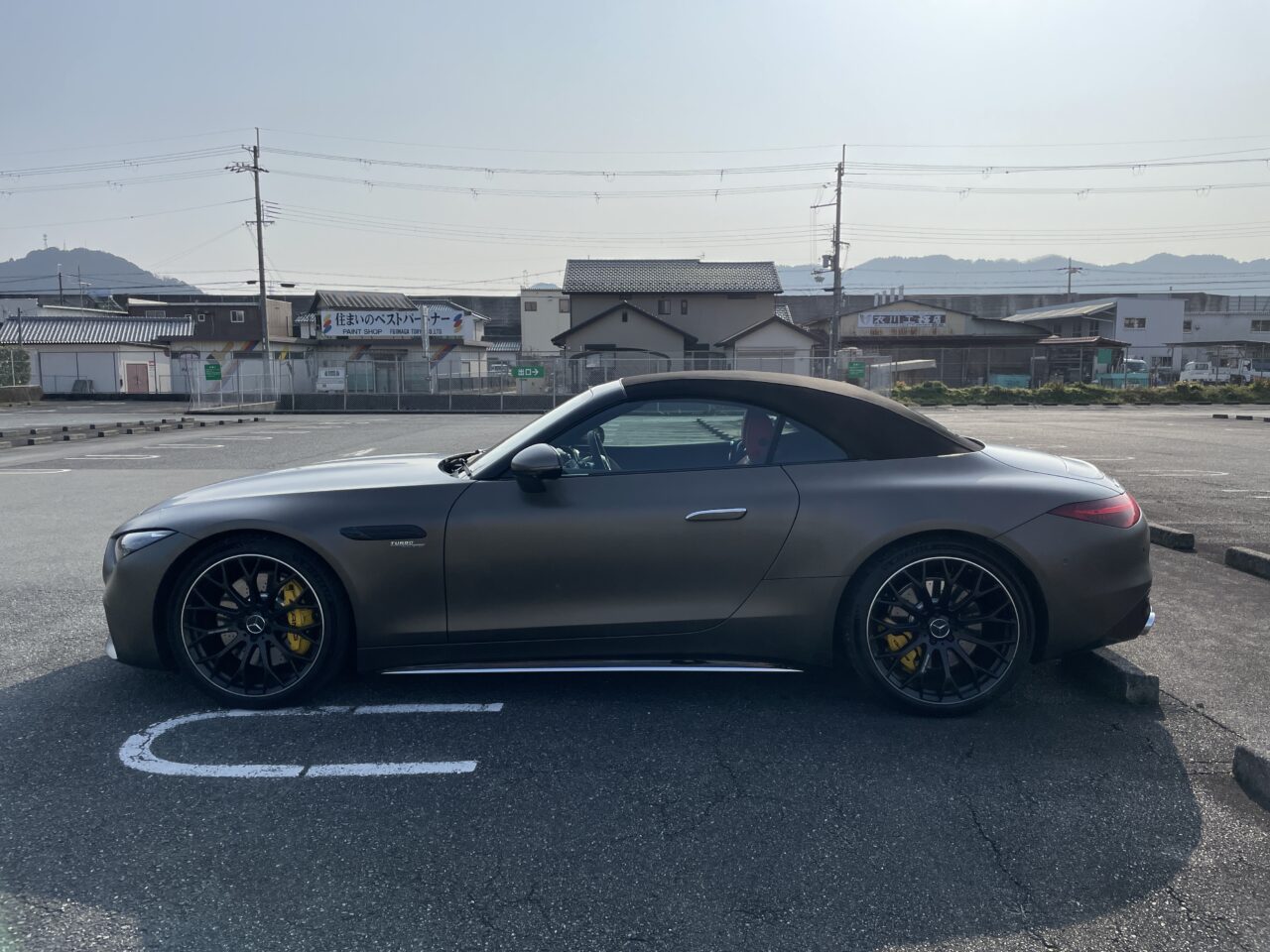
As you approach the car, the door handles automatically extend to welcome the driver. Opening the doors, which are unusually heavy for recent models, and stepping inside reveals a center console dominated by a huge touchscreen monitor, familiar from the new C-Class and S-Class.
The driver’s area curves slightly to envelop the occupant, so compared to previous SLs, it feels a bit tighter.
The seats are very comfortable but lean toward a sporty design rather than the traditional luxurious SL style, so the cushioning is thinner. The Mercedes signature electric seat adjustment buttons on the door are now touch-sensitive, requiring some getting used to.
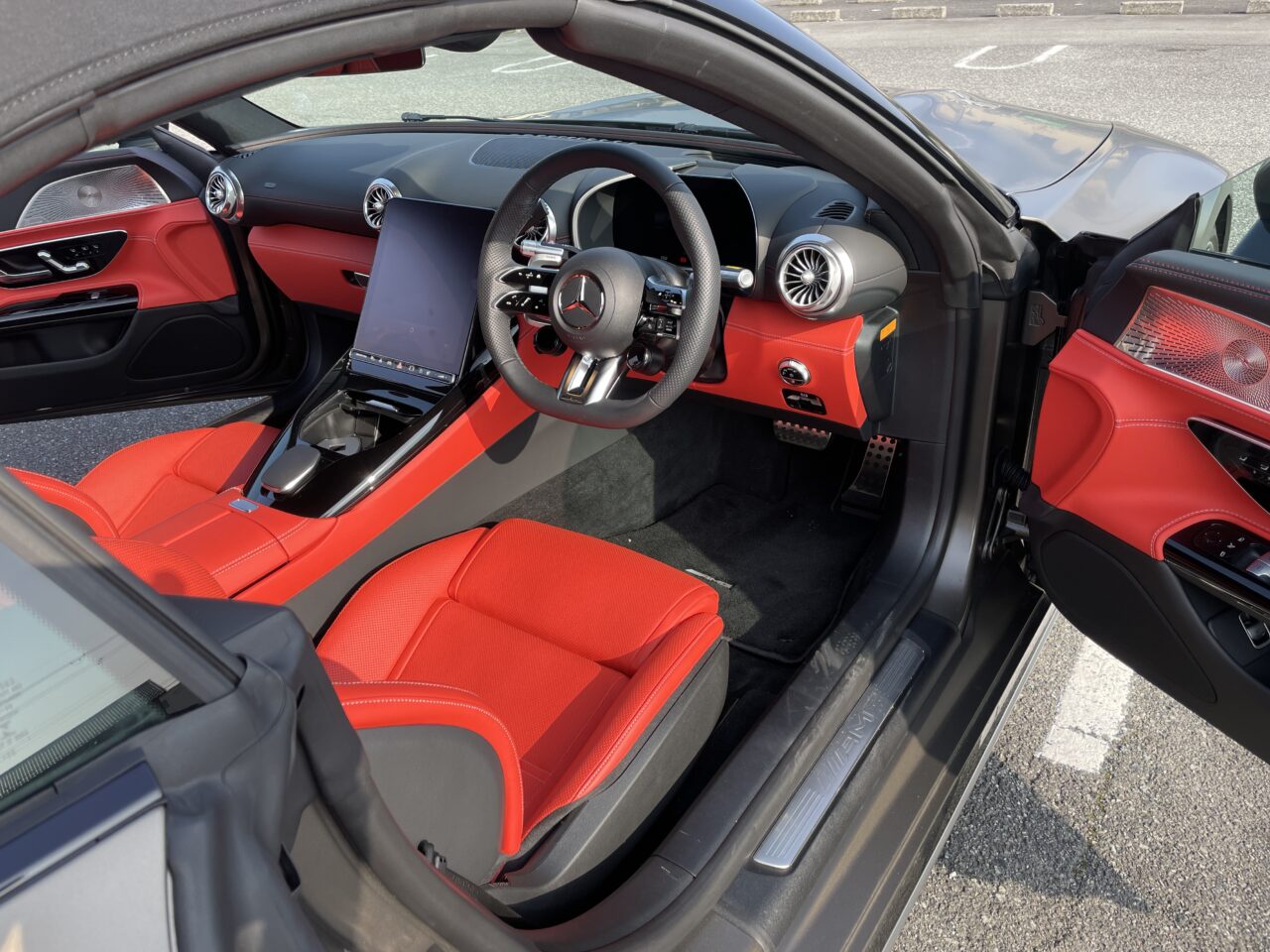
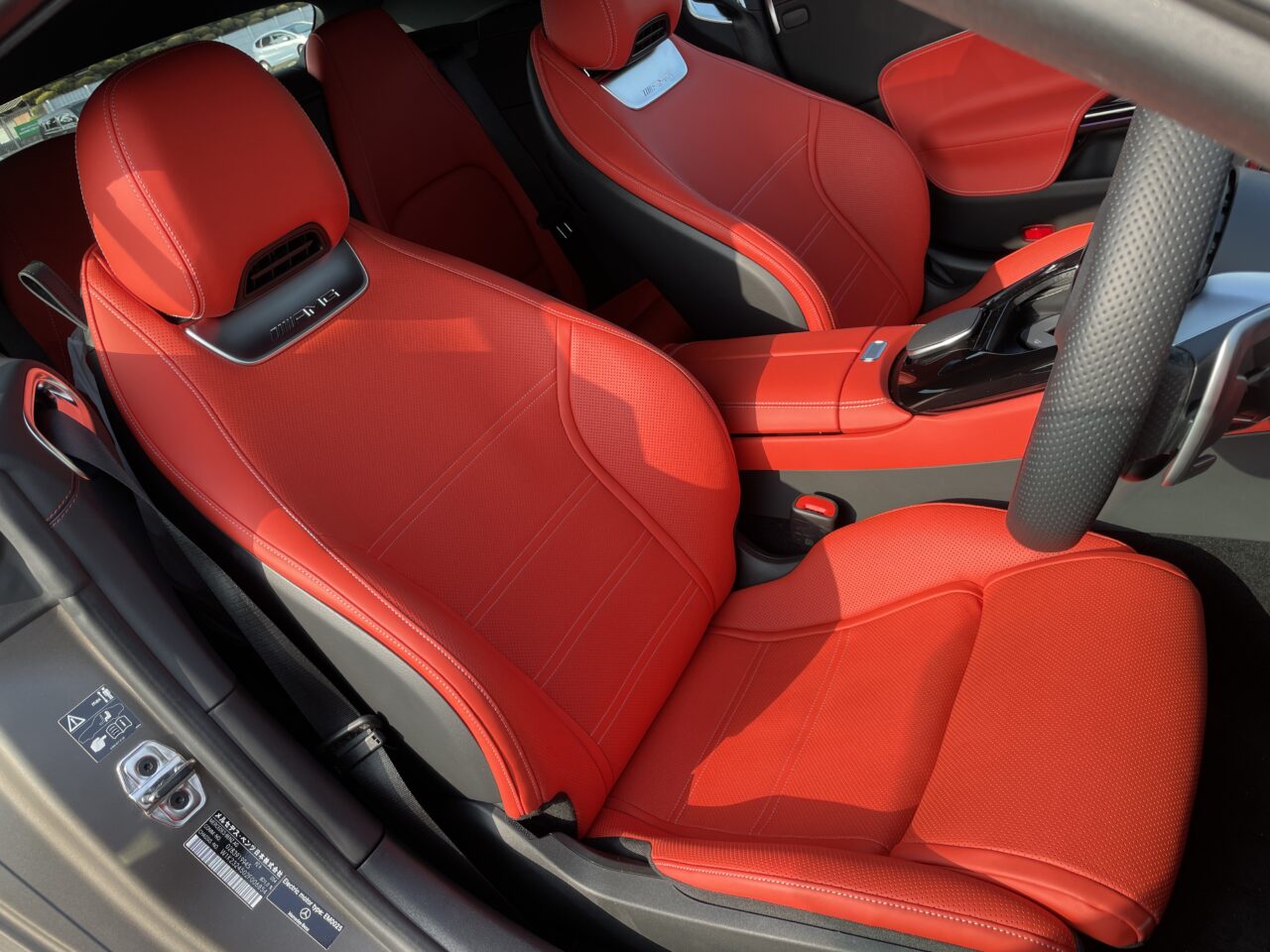
The rear seats are really only suitable for children. They’re about the same size as those in a Porsche 911 and should be considered purely emergency seats.
Incidentally, since it’s now a 4-seater, you might expect to be able to recline the seats fully to rest, but my brother said that if you recline the backrest beyond a certain angle, the seat cushion automatically moves forward. He suspects they might be using the control unit from the 2-seater era.
He’s disappointed that despite being a 4-seater, you can’t fully recline the seats to relax.
Almost all functions and settings inside the car are operated via a tablet-like touchscreen on the center console. Once you get used to it, controlling the air conditioning, audio, and navigation is fine, but for the SL, even opening and closing the roof must be done through this touchscreen, and the usability is hopelessly poor.
You can operate the roof while driving, but you have to slide and hold the switch continuously. Doing this on a touchscreen is very difficult, especially since the touch response can be poor and vibrations while driving can cause your finger to slip off. This often causes the roof to stop halfway, leading to panic and dangerous situations.
I believe this interface significantly deviates from Mercedes’ traditional safety-first policy, which aims to avoid confusing the driver while driving, so I hope they improve it urgently.
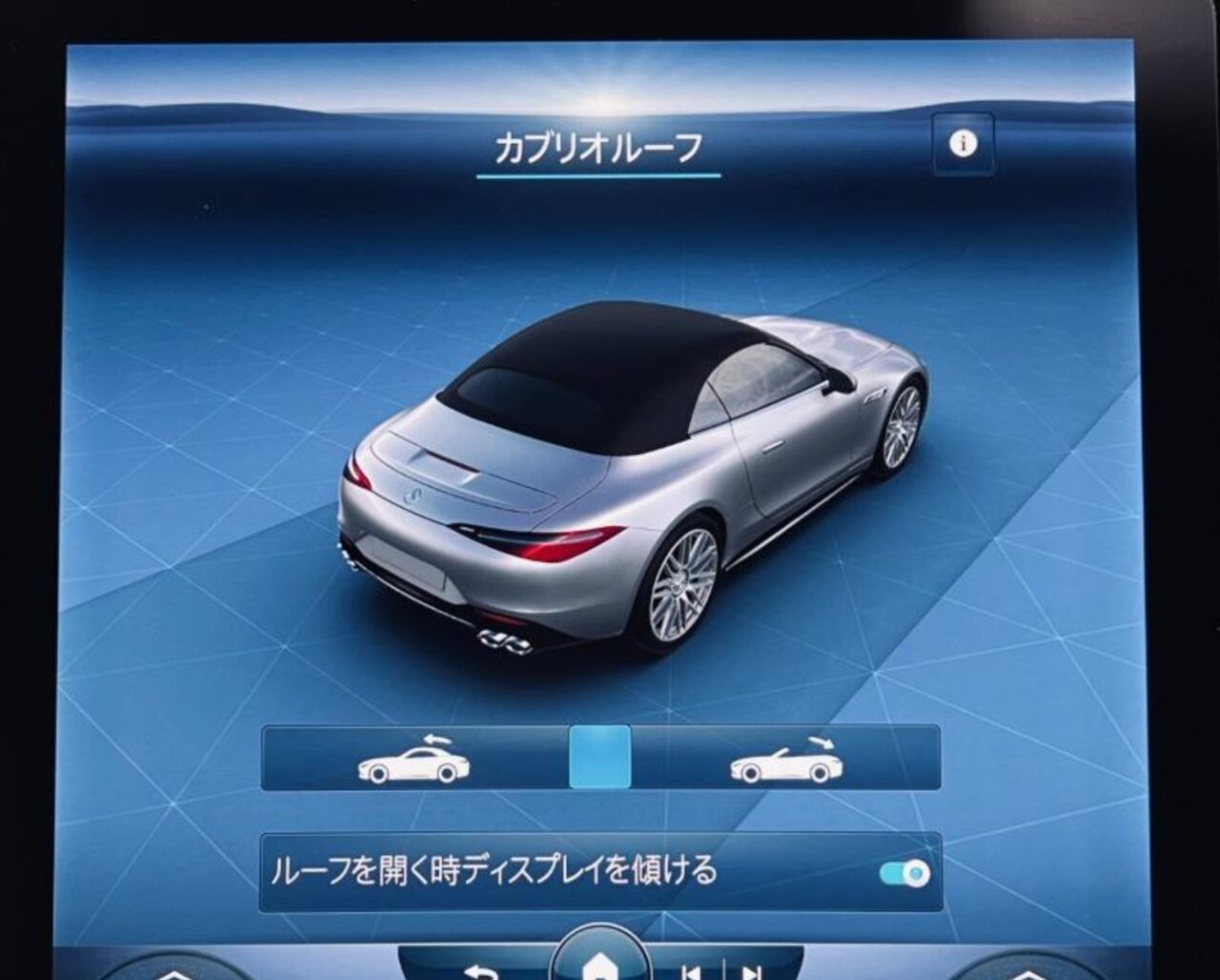
This operation is very poor. Maintaining touch on the screen while driving is especially difficult.
Engine & Handling
The engine wakes up with a bold startup sound, especially for a modern car meeting noise regulations.
Shift into D and start driving. “Stiff!” I couldn’t help but say it out loud.
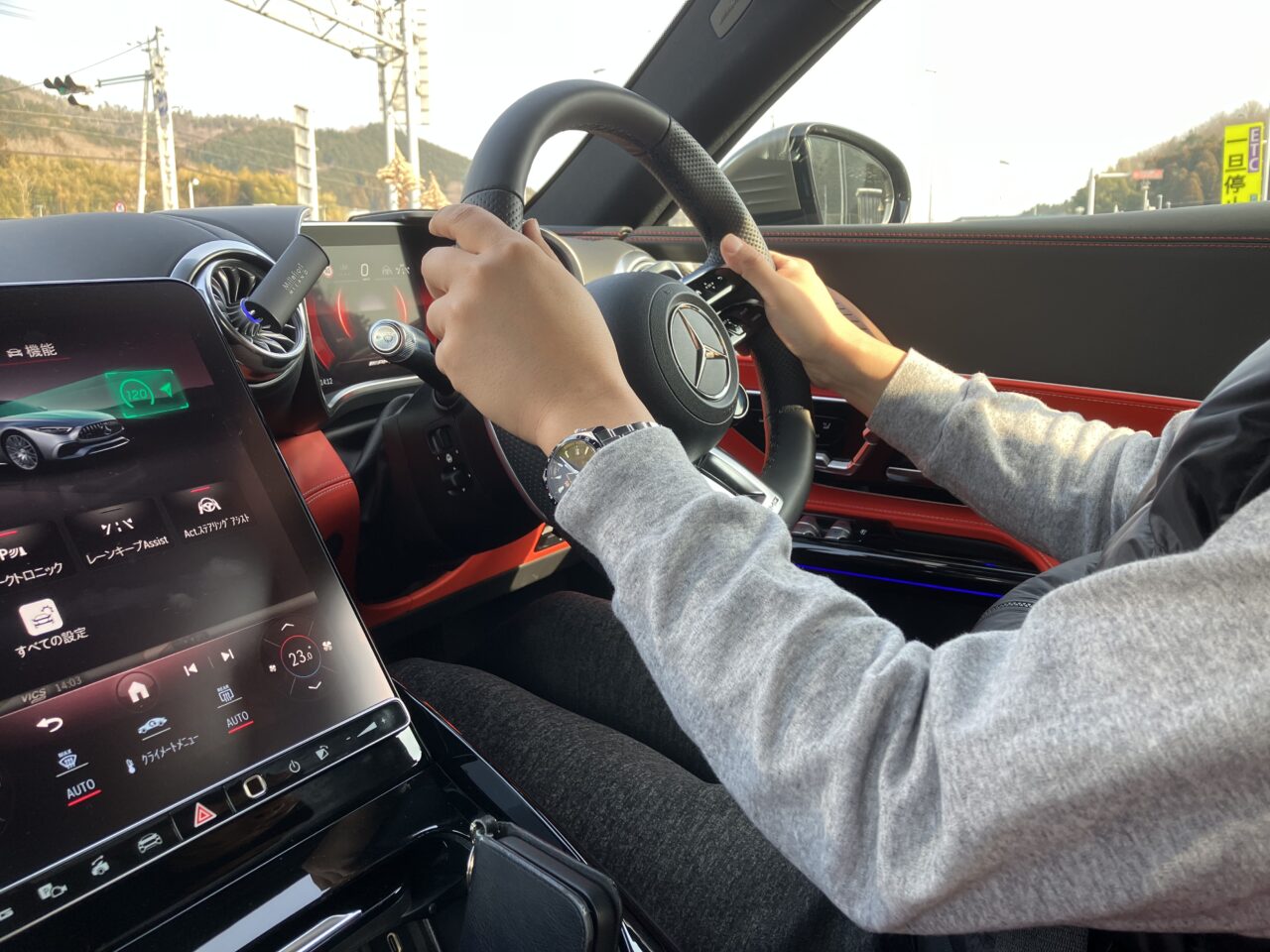
This stiffness is not what you’d expect from a classic ‘SL.’ This particular car has 21-inch wheels as a dealer option, which might contribute, but even so, it’s on the stiff side. Of course, it doesn’t have the harsh jolts of a custom car, but the body noticeably bounces vertically on rough roads. Honestly, it might be difficult to use as a date car at low speeds.
Compared to a Porsche, the 992 clearly offers a more comfortable ride.
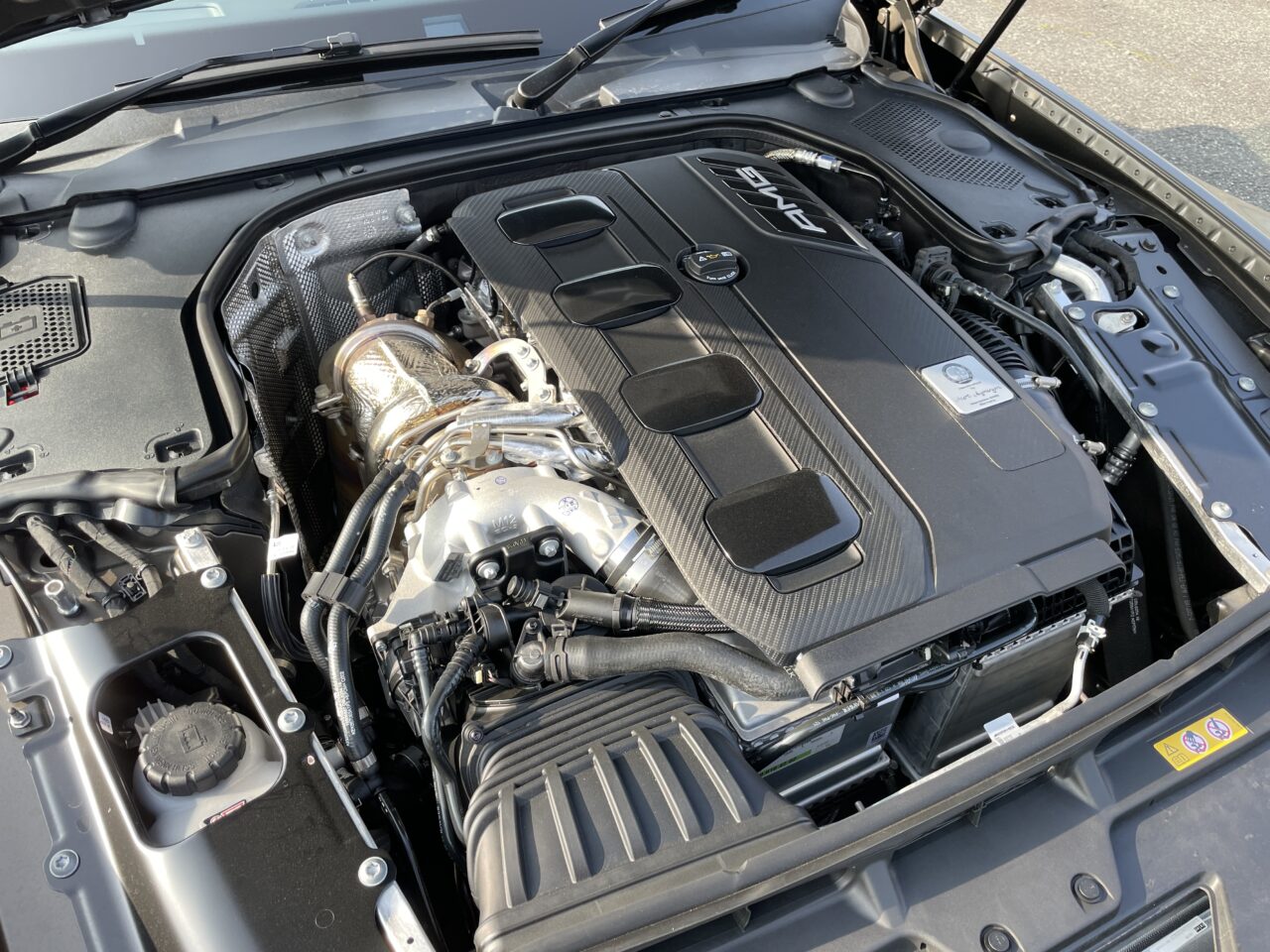
2-liter four-cylinder with electric turbo
Now, let’s see how the much-hyped 2-liter 4-cylinder engine equipped with an F1-derived electric turbo performs. I gently and then more quickly pressed the accelerator to check the torque delivery. But there’s a bigger problem.
The 9-speed automatic ‘AMG Speedshift MCT’ transmission control is terrible.
There might be individual differences, but the shift shock from 1st to 2nd gear is severe, as if this is the first time the SL has had an AMG Speedshift MCT, and it’s embarrassingly rough.
No matter how carefully you operate the accelerator, you feel a jolt when shifting from 1st to 2nd.
Luckily, shift shocks disappear from 3rd gear onward, but this ruins the experience of the electric turbo’s responsiveness. I sincerely hope they improve the shift control program soon.
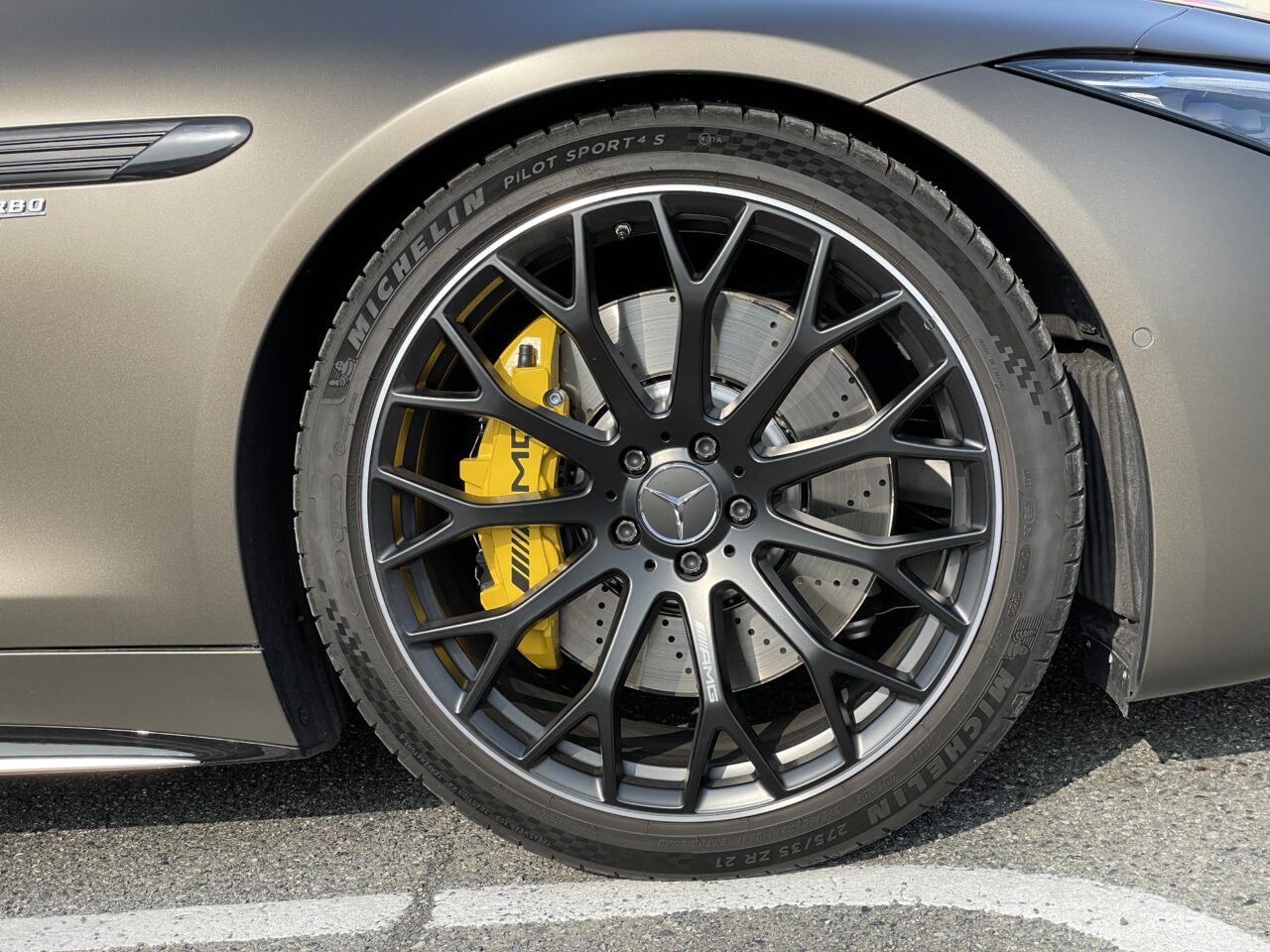
After leaving the city and heading toward the highway, I tested the handling on interchange curves. Thanks to the stiff suspension, the handling is excellent. The tires have good grip, and it drives like a true sports car. Regarding agility and performance, this is classic AMG quality.
Also, being a 2-liter 4-cylinder, it’s nimble and quick to turn in. However, the sense of solidity and the smooth, luxurious ride that caresses the road are missing.
So, rather than an ‘SL,’ if you see it as a sports car developed by AMG, the handling scores quite high.
Highway Feel
Merging onto the highway, I switched to Sport Plus mode and pressed the accelerator deeply. The electric turbo delivers plenty of torque and responsiveness—impressive. Judging by power alone, you wouldn’t believe it’s a 2-liter 4-cylinder. It feels more like a high-performance 6-cylinder in power and response.
With 381 ps, it’s fast enough. Unless you’re used to AMG 63 models, you won’t complain about the speed. By the way, my 992 Carrera Cabriolet has 385 ps, nearly the same, but it feels faster. Weight differences might play a role, but more so, the torque density and power delivery differ. The SL’s engine is excellent but seems to lack a bit of punch at higher speeds.
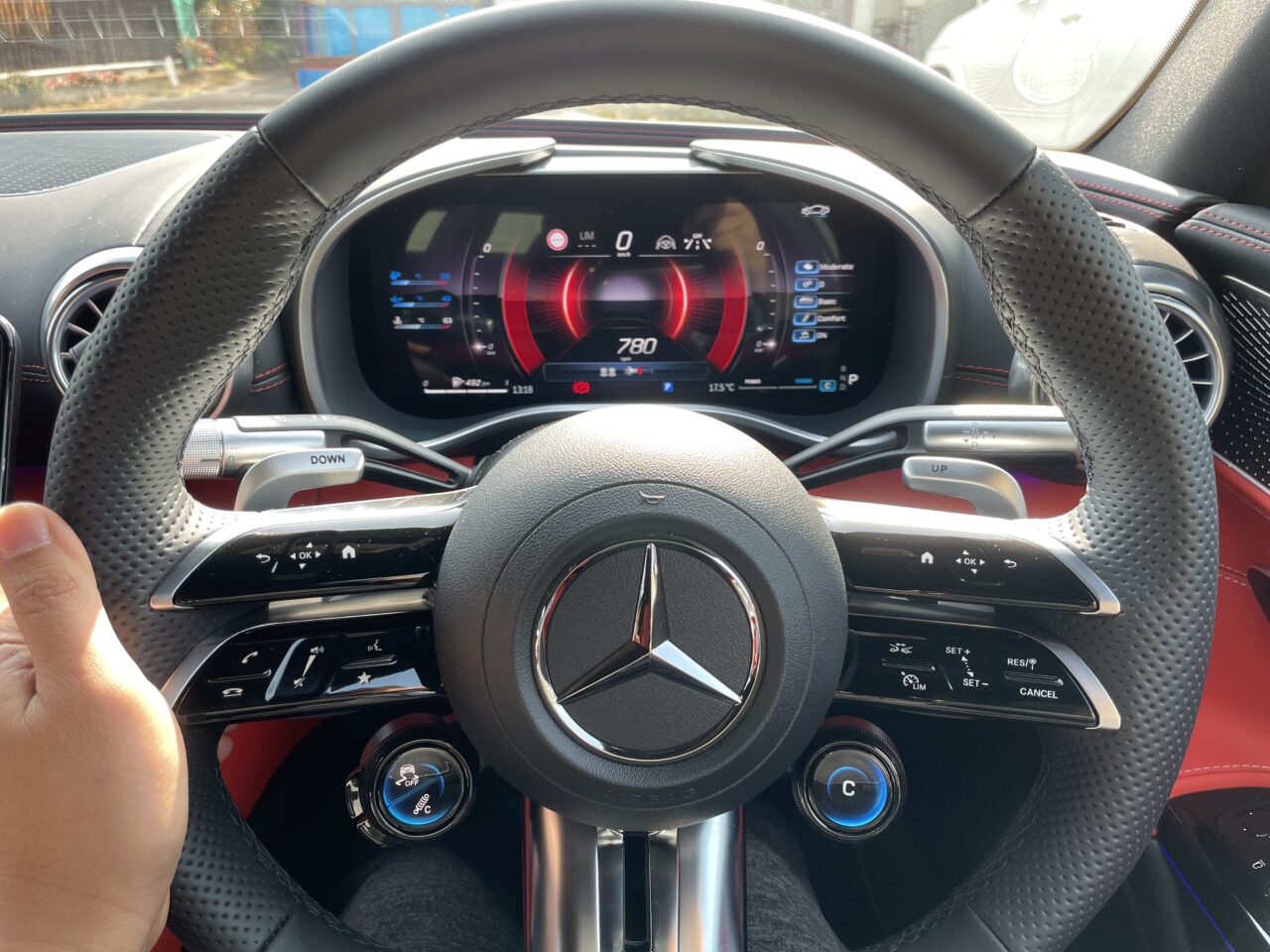
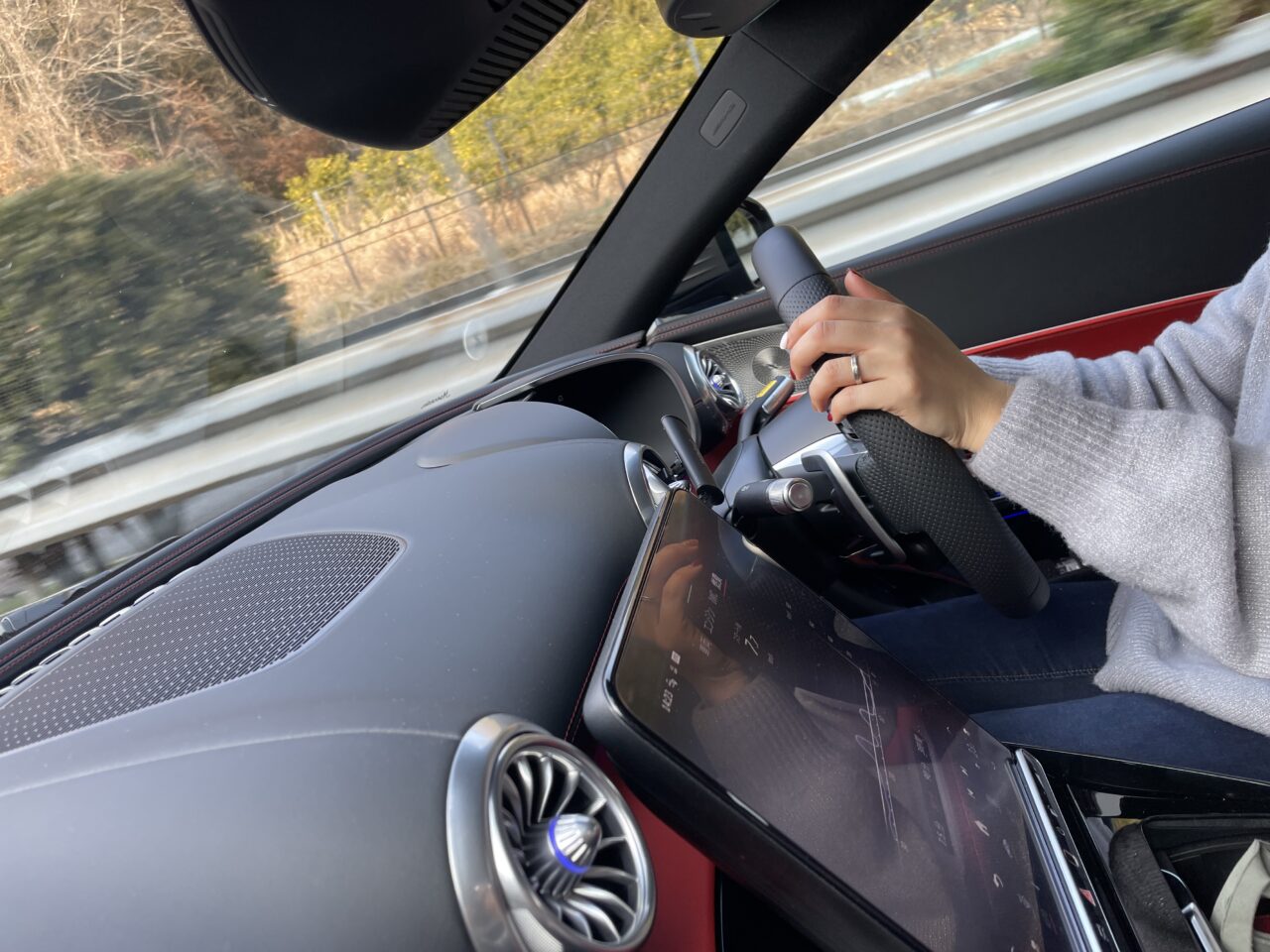
Highway stability is more than sufficient. There’s little sense of speed, which is classic SL. However, even with the roof closed, wind and road noise are quite noticeable. Cabin noise is on par with the 992 Carrera Cabriolet, and at speeds where you lead the passing lane or inside tunnels, you need to consciously raise your voice a bit to talk with the passenger.
This is another point where the new SL has shifted fully toward being a sports car.
Testing high-speed corners, switching lanes from inside to outside and back, the SL43 is more than fast enough and inspires no unease. But if you look closely, the front end is quick to respond, while the rear’s follow-through feels a bit off.
Driving the same curve in a 992, the chassis feels completely on rails, tracing a perfect arc, but the SL’s arc is somewhat irregular—more of a polygon than a perfect circle. This is more about feel than outright performance, so while not slower, it falls a bit short in driving ‘pleasure.’
Overall Impression
My brother said, “I don’t know what kind of feeling I’m supposed to have when driving this car.”
I agree with him after driving this SL. If you expect an ‘SL,’ it’s too sporty. But compared to rivals like the 911, it’s not a full-fledged sports car either. Its position in the lineup is unclear.
So, how you evaluate this car depends greatly on what you expect from it. For me, who expected the traditional ‘SL,’ the rating is honestly low. But on the other hand, if you buy it expecting a sportier car, it deserves a fairly high score.
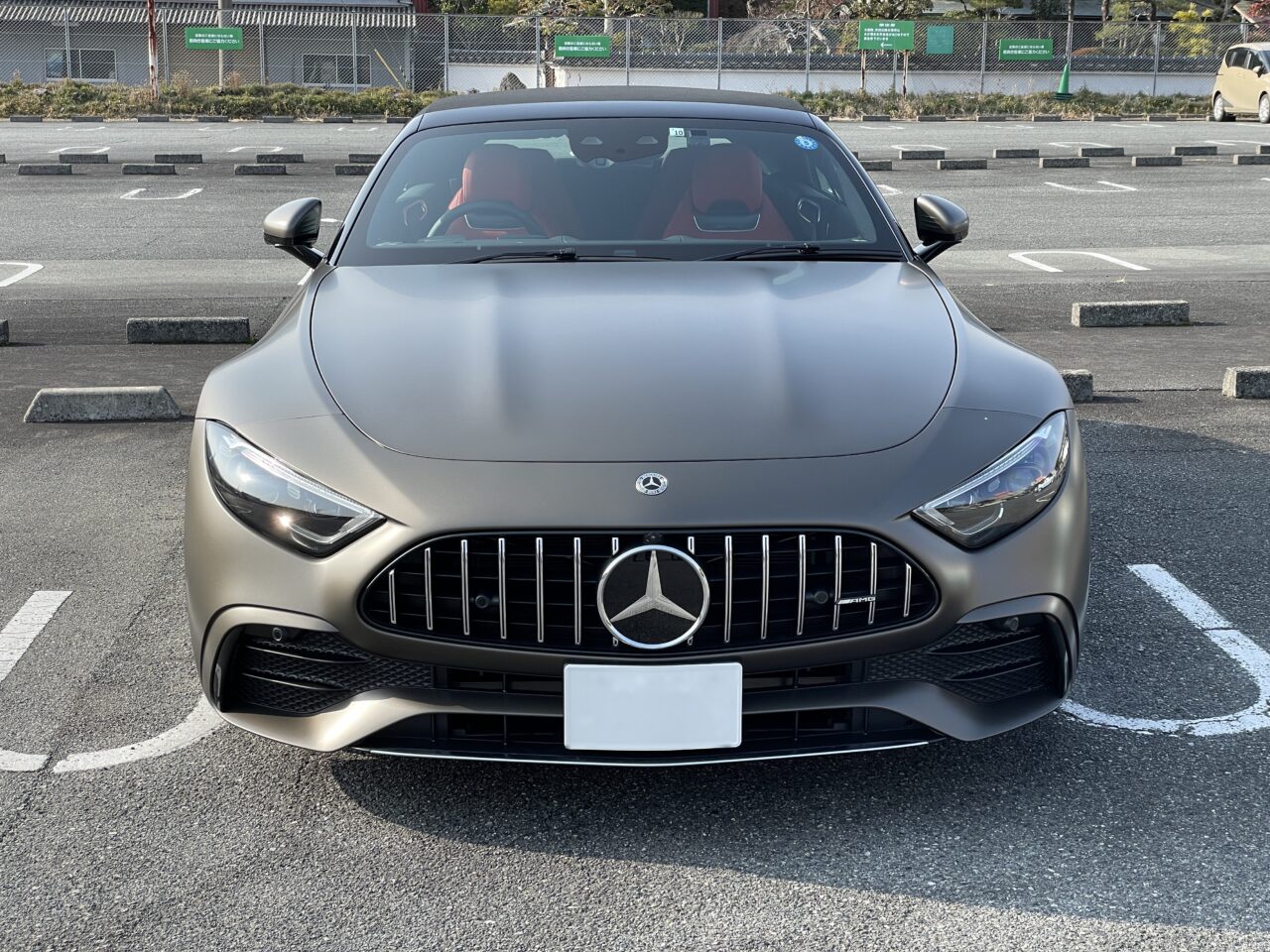
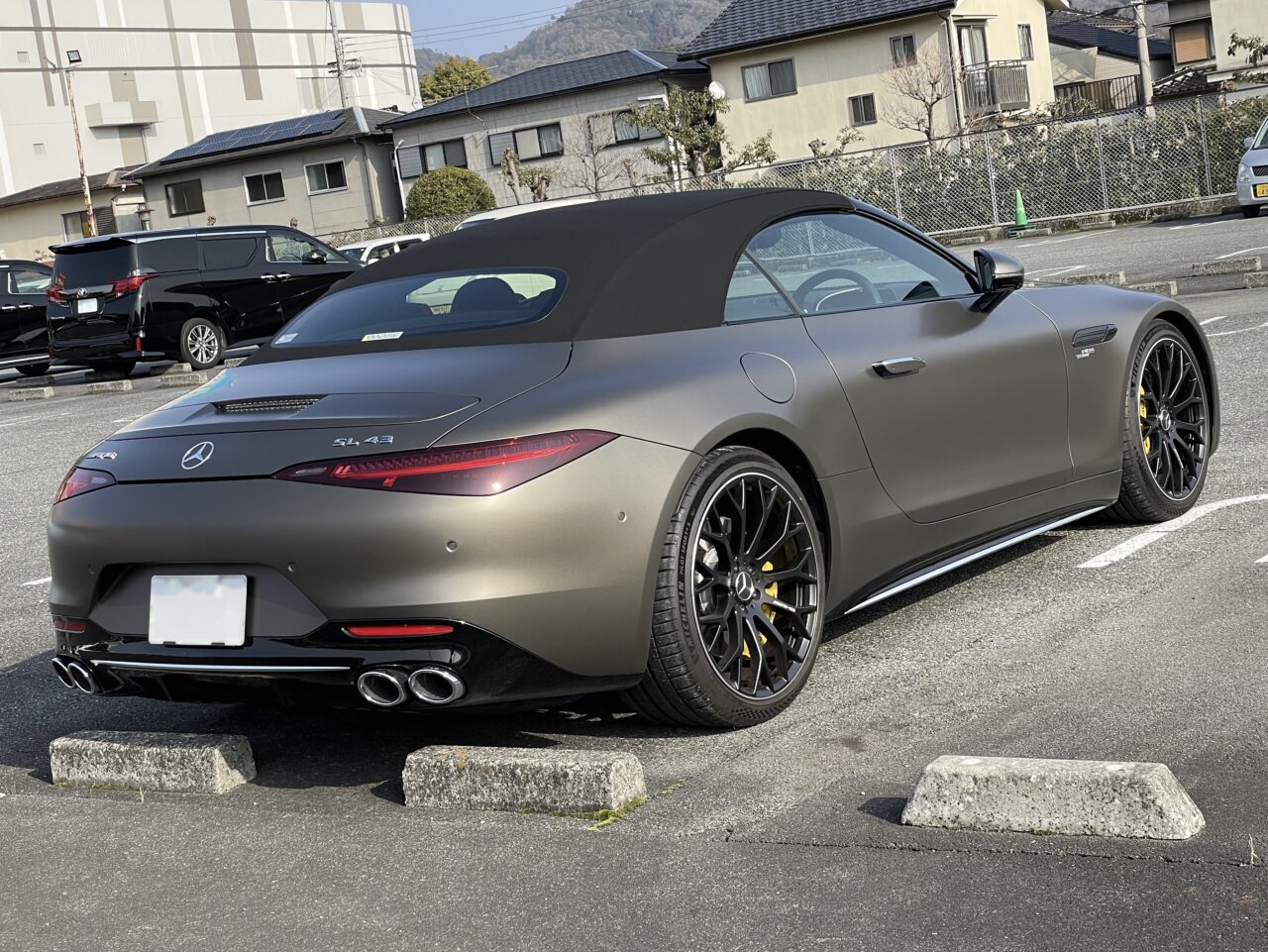
During a conversation with my wife in the passenger seat about “What car does this SL resemble?,” the answer that came to mind was the ‘718 Cayman/Boxster.’ In short, think of this SL as a larger, more luxurious version of the 718. The engine sound, feel, cyborg-like speed as a sports car, and chassis rigidity all share many similarities.
Finally, I want to ask the developers: “Why did you name it SL?”
By the way, if I were to name this car, I’d call it the ‘AMG GT C Cabriolet.’ Not a ‘Roadster’ but a ‘Cabriolet.’ Imagining it that way fits this car much better.
このブログが気に入ったらフォローしてね!


Comment ( 0 )
Trackbacks are closed.
No comments yet.